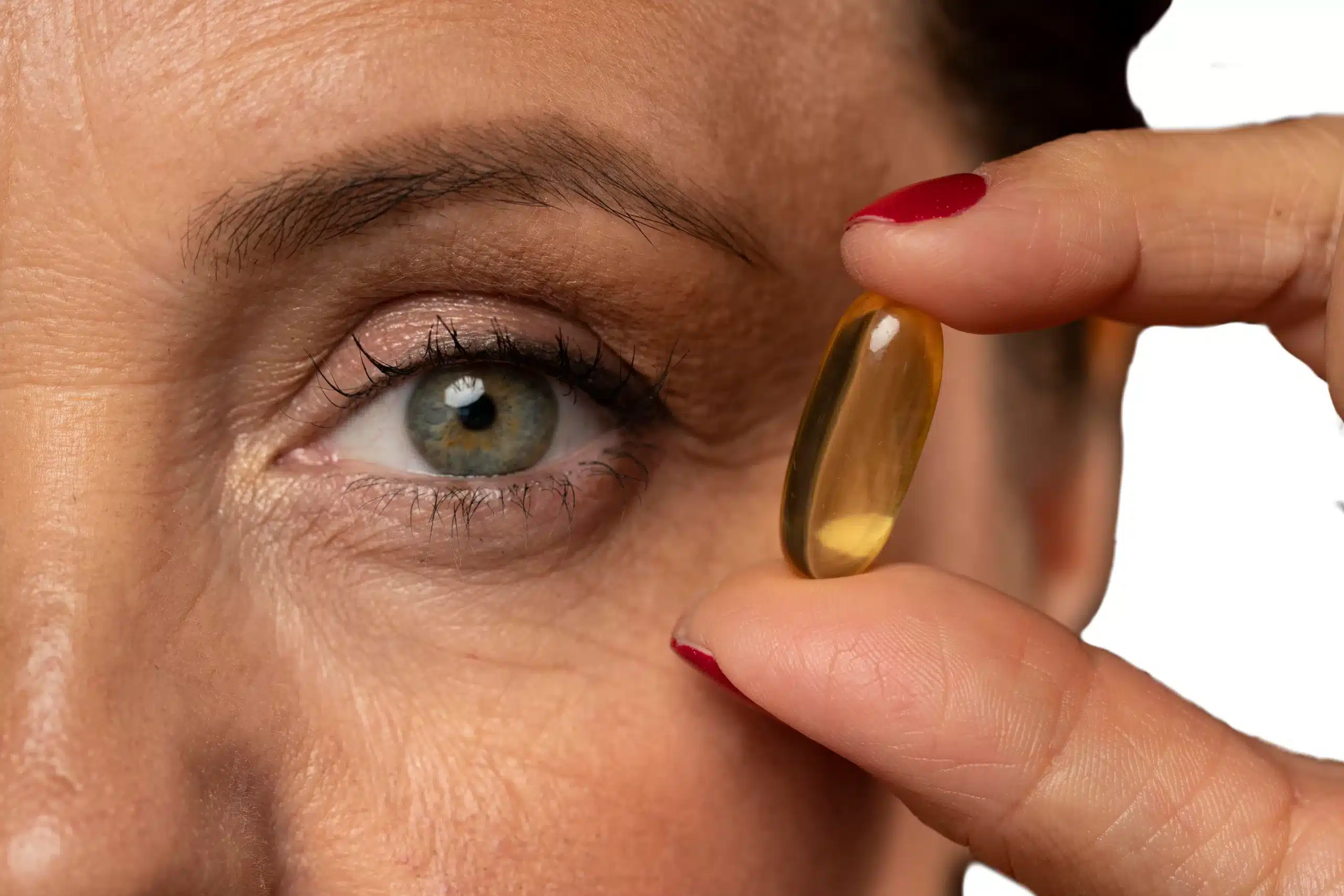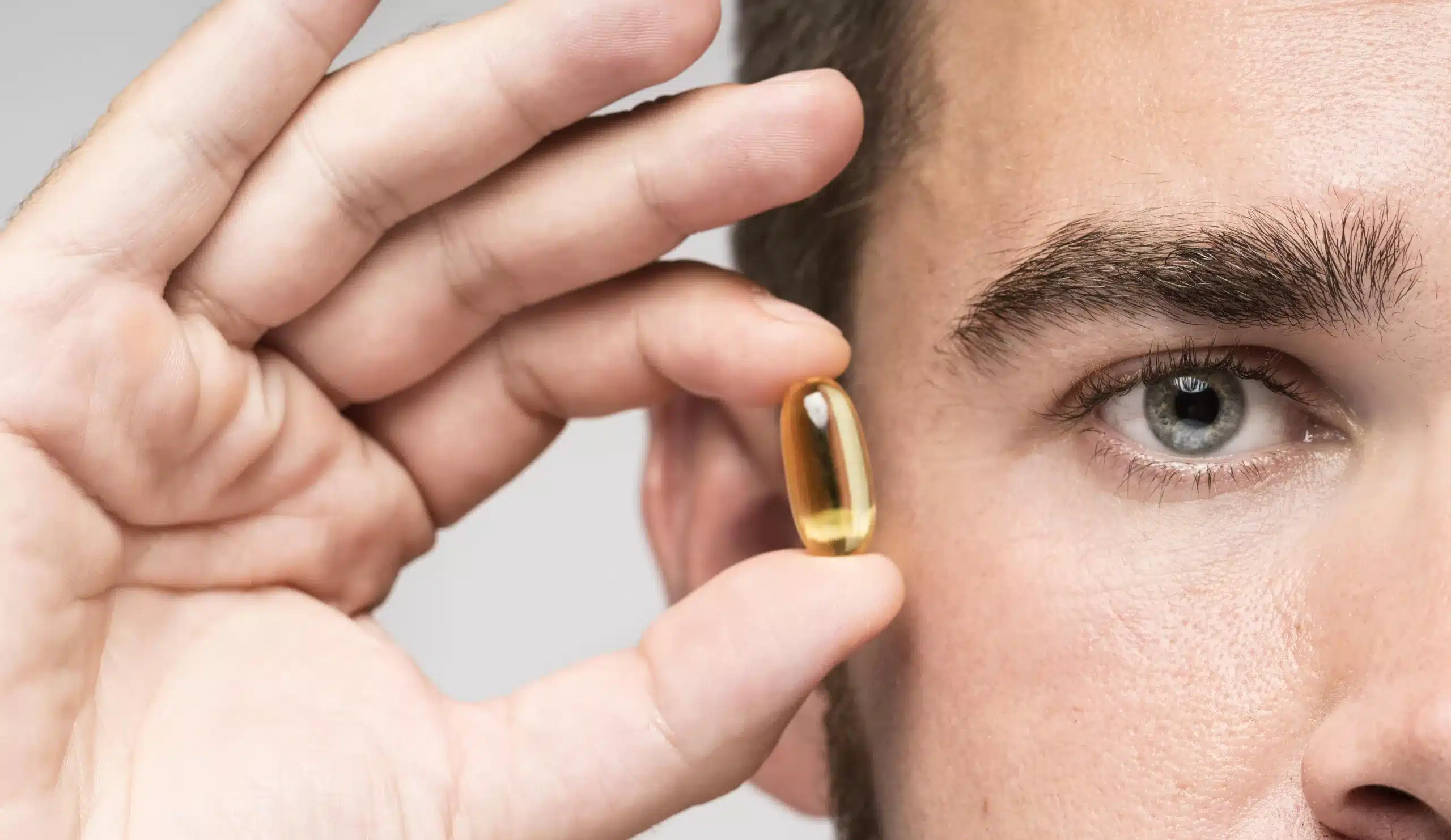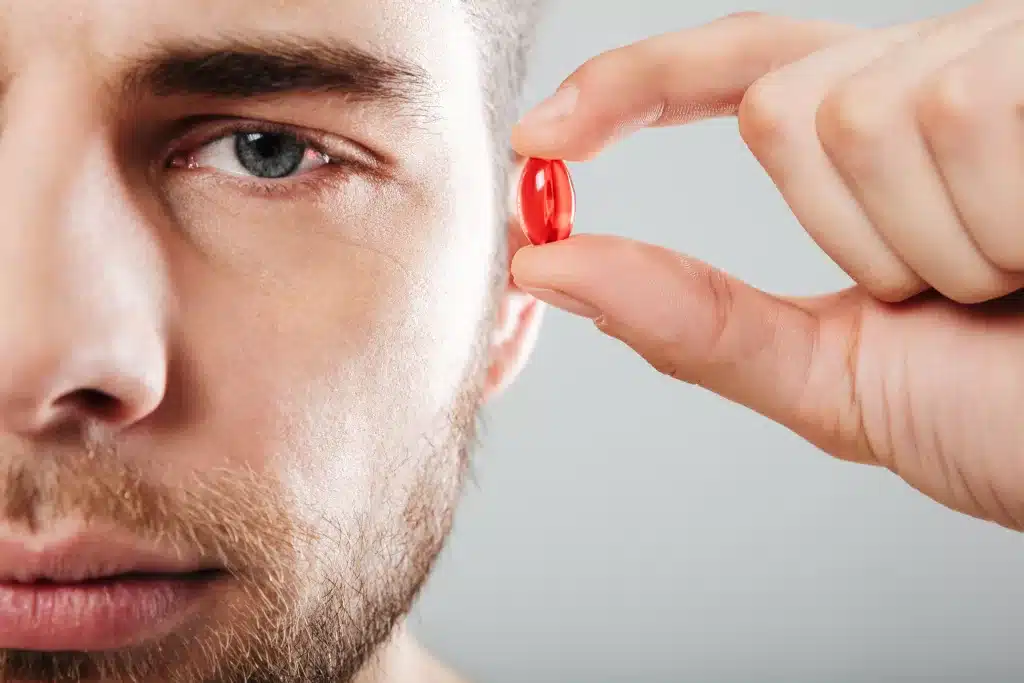Eye Care
Understanding Dry Eye Syndrome: Causes, Symptoms, and Treatment Options
Dry eye syndrome, also known as dry eye disease or keratoconjunctivitis sicca, is a common condition that occurs when the eyes do not produce enough tears or when the tears evaporate too quickly. This can lead to discomfort, irritation, and potential damage to the surface of the eyes. In this detailed blog, we will explore the causes, symptoms, diagnosis, treatment options, and preventive measures to follow.
This kind of eye syndrome, also known as dry eye disease (DED) or keratoconjunctivitis sicca, is a common condition that occurs when there is an imbalance in the tear film that lubricates the eyes. Tears are essential for maintaining the health and comfort of the eyes by providing moisture, lubrication, and protection against infections.
What is Dry Eyes Syndrome?
Dry eye syndrome is a condition characterized by inadequate tear production or poor tear quality, resulting in dryness and irritation of the eyes. Tears are essential for maintaining the health of the ocular surface, providing lubrication, and protecting against infections.
The Causes
Several factors can contribute to dry-eye syndrome:
- Age: Dry eye becomes more common with age due to changes in tear production and composition.
- Environmental Factors: Dry or windy climates, air conditioning, and indoor heating can contribute to tear evaporation.
- Medical Conditions: Conditions such as diabetes, rheumatoid arthritis, and Sjögren’s syndrome can cause dry eye.
- Medications: Certain medications, including antihistamines, decongestants, and antidepressants, can reduce tear production.
- Lifestyle Factors: Prolonged screen time, contact lens wear, and insufficient blinking can contribute to dry eye issues.

Dry Eye Syndrome Symptoms
The dry eye symptoms can vary but often include:
- Dryness
- Irritation or itching
- Redness
- Burning or stinging sensation
- Excessive tearing (as a reflex response to dryness)
- Blurred vision
- Sensitivity to light
Diagnosis of Dry Eyes Syndrome
To diagnose dry eye complications, an eye care professional may perform the following tests:
- Symptom Assessment: The doctor will inquire about your symptoms and medical history.
- Tear Production Test: Schirmer’s test measures tear production using special paper strips placed under the lower eyelid.
- Tear Quality Assessment: Tear film breakup time (TBUT) measures how quickly tears evaporate from the eye’s surface.
- Evaluation of Eye Surface: Using special dyes, the doctor can assess the health of the cornea and conjunctiva.
Dry Eye Treatment Options
The dry eye Treatment aims to relieve symptoms and improve tear quality. Common treatment options include:
- Artificial Tears: Lubricating eye drops can supplement natural tears and alleviate dryness.
- Prescription Eye Drops: Medications such as cyclosporine (Restasis) or lifitegrast (Xiidra) can reduce inflammation and promote tear production.
- Punctal Plugs: These tiny devices block tear drainage channels to help retain moisture on the eye’s surface.
- Lifestyle Modifications: Avoiding dry environments, taking breaks from digital screens, and staying hydrated can reduce dry eye symptoms.
- Omega-3 Supplements: Consuming omega-3 fatty acids may improve tear composition and reduce inflammation.
Preventive Measures to Follow:
To prevent or minimize dry eye issues, consider the following tips:
- Use Humidifiers: Adding moisture to indoor air can help prevent dryness, especially during the winter months.
- Take Breaks from Screens: Follow the 20-20-20 rule—take a 20-second break every 20 minutes to look at something 20 feet away.
- Blink Regularly: Blinking helps spread tears evenly across the eyes and prevents evaporation.
- Wear Sunglasses: Sunglasses can protect against wind and UV rays, which can exacerbate dry eye problems.
- Stay Hydrated: Drinking an adequate amount of water can help maintain tear production and overall eye health.
When to See a Doctor
If you experience persistent or worsening dry eye, consult an eye care professional for evaluation and personalized treatment recommendations. Prompt diagnosis and management can help prevent complications and improve quality of life.
Lifestyle Tips to Follow for Preventing Dry Eye Problems
Managing dry eye problems through lifestyle modifications can significantly improve comfort and reduce irritation. Here are detailed lifestyle tips to alleviate dry eye issues:
1. Blink Regularly
- Why it Helps: Blinking spreads tears evenly across the surface of the eyes, keeping them moist and preventing evaporation.
- Tip: Practice the 20-20-20 rule: every 20 minutes, look at something 20 feet away for at least 20 seconds to encourage natural blinking.
2. Use a Humidifier
- Why it Helps: Adding moisture to indoor air can prevent dryness, especially in environments with low humidity.
- Tip: Place a humidifier in your home or workspace to maintain a comfortable level of humidity, ideally between 30% and 50%.
3. Take Breaks from Screens
- Why it Helps: Extended screen time can reduce blink rate and lead to dry eye symptoms.
- Tip: Take regular breaks from digital devices. Use the 20-20-20 rule and consider using artificial tears before and after screen use.
4. Stay Hydrated
- Why it Helps: Drinking an adequate amount of water supports overall hydration, including tear production.
- Tip: Aim to drink at least 8 glasses (64 ounces) of water per day, or more if you’re in a dry environment or engaging in physical activity.
5. Wear Sunglasses
- Why it Helps: Sunglasses protect your eyes from wind, dust, and UV rays that can exacerbate dry eye.
- Tip: Choose wrap-around sunglasses with UV protection to shield your eyes from environmental factors.
6. Avoid Smoking and Secondhand Smoke
- Why it Helps: Smoking and exposure to smoke can worsen the situation by irritating the eyes and reducing tear production.
- Tip: Quit smoking if you currently smoke, and avoid exposure to secondhand smoke whenever possible.
7. Eat a Balanced Diet
- Why it Helps: Omega-3 fatty acids found in fish and flaxseed oil may help improve tear quality and reduce inflammation.
- Tip: Incorporate foods rich in omega-3s, such as salmon, walnuts, and chia seeds, into your diet regularly.
8. Manage Allergies and Eye Conditions
- Why it Helps: Allergies and certain eye conditions can lead to certain vision problems.
- Tip: Consult with an allergist or ophthalmologist to manage allergies effectively and treat any underlying eye conditions.
9. Practice Good Eyelid Hygiene
- Why it Helps: Clean eyelids reduce the risk of inflammation and blockage of the oil glands that contribute to tear stability.
- Tip: Use a warm compress or eyelid wipes to gently clean your eyelids daily, especially if you have blepharitis or meibomian gland dysfunction.
10. Limit Exposure to Dry Environments
- Why it Helps: Dry air can accelerate tear evaporation and worsen the eyes.
- Tip: Use a scarf or wraparound glasses to protect your eyes in windy conditions, and consider using a humidifier in dry indoor environments.
11. Follow Eye Care Professional’s Recommendations
- Why it Helps: Regular eye exams and personalized recommendations from an eye care professional are crucial for managing dry eye issues effectively.
- Tip: Schedule routine eye exams and follow your doctor’s advice regarding the use of lubricating eye drops, prescription medications, or other treatments.

By incorporating these lifestyle tips into your daily routine, you can effectively manage dry eye problems and improve the overall health and comfort of your eyes. If symptoms persist or worsen despite lifestyle modifications, consult with an eye care professional for further evaluation and personalized treatment options. Prompt and proactive
management of dry eye problems e is essential for maintaining optimal eye health and quality of life.
How to choose eye drops for dryness?
Choosing the right eye drops for dryness can greatly alleviate symptoms and provide relief for dry eyes. Here are some top recommendations for eye drops commonly used to combat dryness:
1. Artificial Tears
- Purpose: Lubricates the eyes and provides temporary relief from dryness and irritation.
- Key Features:
- Available over-the-counter (OTC) without a prescription.
- Mimics natural tears to supplement moisture on the eye surface.
- Safe for frequent use throughout the day as needed.
Popular Brands: Refresh Tears, Systane Ultra, TheraTears, Blink Tears
2. Preservative-Free Eye Drops
- Purpose: Provides lubrication without the use of preservatives, ideal for those with sensitive eyes or frequent use.
- Key Features:
- Eliminates the risk of preservative-related irritation or allergic reactions.
- Available in single-dose vials or preservative-free bottles.
- Suitable for long-term use and frequent application.
Popular Brands: Refresh Optive Mega-3 Preservative-Free, TheraTears Lubricant Eye Drops, Refresh Optive Preservative-Free
3. Gel or Ointment Eye Drops
- Purpose: Offers prolonged relief and protection for severe dryness, especially at night.
- Key Features:
- Formulated with thicker consistency to provide longer-lasting lubrication.
- Ideal for individuals with chronic dry eye or nocturnal dryness.
- Best used before bedtime due to temporary blurriness upon application.
Popular Brands: Systane Gel Drops, Refresh Celluvisc, Genteal Tears Severe Dry Eye Relief
4. Prescription Eye Drops
- Purpose: Treats underlying causes of dry eye, such as inflammation or inadequate tear production.
- Key Features:
- Requires a prescription from an eye care professional.
- Targets specific mechanisms involved in dry eye syndrome.
- Provides more potent and targeted relief compared to OTC options.
Common Prescription Brands: Restasis (cyclosporine), Xiidra (lifitegrast)
5. Hyaluronic Acid Eye Drops
- Purpose: Provides intensive hydration and promotes healing of the ocular surface.
- Key Features:
- Contains hyaluronic acid, which retains moisture and supports tissue repair.
- Suitable for moderate to severe dry eye issues.
- Offers prolonged relief with fewer applications.
Popular Brands: Hylo-Forte, Hylo-Tear, Thealoz Duo
Tips for Using Eye Drops: - Key Features:
-
- Follow Instructions: Always read and follow the instructions provided with the eye drops.
- Avoid Contamination: Do not touch the tip of the dropper to prevent contamination.
- Wait Between Applications: Allow a few minutes between different types of eye drops, if using multiple products.
- Consult Your Eye Care Professional: Seek advice from an eye care professional for personalized recommendations and treatment options.
When selecting eye drops for dryness, consider your specific symptoms, severity of dry eye, and any underlying conditions. It’s essential to use eye drops as directed and consult with an eye care professional if symptoms persist or worsen despite treatment. Regular eye exams are also important for monitoring eye health and adjusting treatment as needed.
Conclusion
In conclusion, dry eye syndrome is a common eye condition characterized by insufficient tear production or poor tear quality. By understanding the causes, symptoms, diagnosis, treatment options, and preventive measures for dry eye issues, individuals can take proactive steps to manage symptoms and maintain ocular health. If you suspect you have dry eye syndrome or have concerns about your eye health, seek guidance from an eye care professional for proper evaluation and management.



